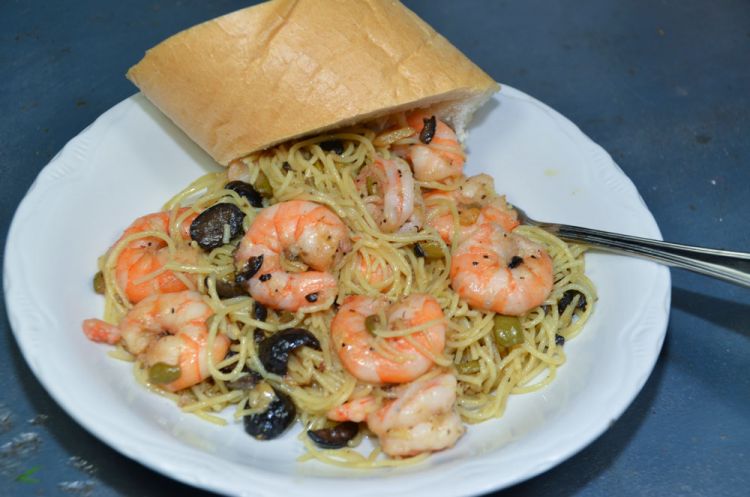 Fishing with a chef is always fun: When you get back to the camp, it’s not bologna sandwiches.
Fishing with a chef is always fun: When you get back to the camp, it’s not bologna sandwiches.
Randy Montegut owns, with his wife Julie, Bon Creole Seafood, a New Iberia restaurant with a powerful following amongst locals. Out-of-towners travel specifically to eat there.
But the building has no windows and until recently being repainted, was entirely covered in a faded, bleached, almost imperceptible swamp scene mural. It is amazing — a true cult food spot.
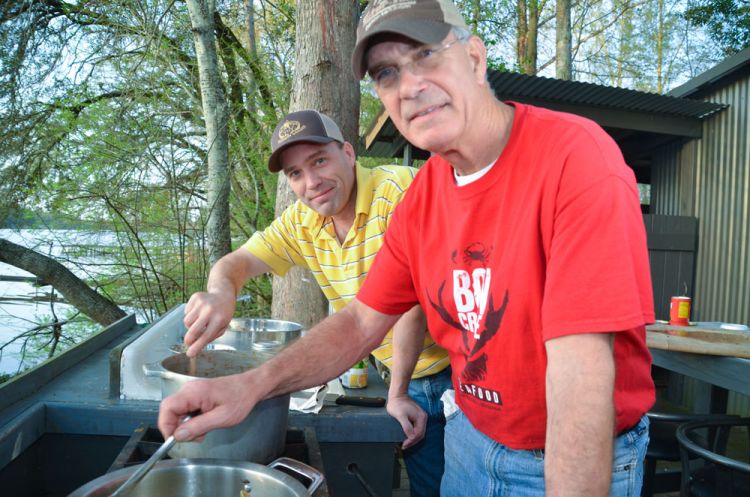
Randy has moved around in the seafood business. The university-educated biologist started as a crawfish processor in Loreauville in 1982. After four years, he added crab processing.
Then he got into a partnership to create Louisiana Crawfish Wholesalers in St. Martinville and ran the plant, which evolved into packaging whole cooked crawfish for the Swedish market.
But when that market collapsed because of Chinese mudbugs, Randy went back to Bon Creole and peeled crawfish and crabs a few years before access to labor became difficult. He bought the building where the restaurant currently sits to process choupique, a primitive freshwater fish, for their caviar.
“I had always wanted to do an overstuffed po-boy shop. When I supplied crawfish to restaurants, the people who owed me the least money were po-boy and boiled seafood shops. The ones that stuck me with losses were fine dining restaurants.
“Now we are most famous for our shrimp po-boys, but we are selling the heck out of gumbo.
“My next business will be a gumbo business.”
Shrimp and Garlic-Olive Pasta
Randy explained the origins of this savory dish.
“When I was doing Swedish crawfish, I worked with a German girl married to a Swede,” he said. “She ran a restaurant and cooked this dish at my house — but just olives and garlic — no shrimp. I’ve adapted it to use shrimp.”
As for the large amount of garlic in the recipe, Randy responded, “Yes, 25 cloves of garlic —I want to taste the garlic.”
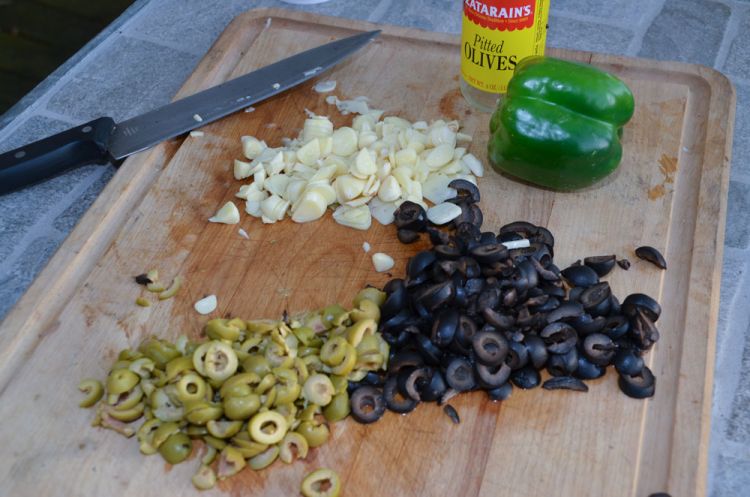
TIP: Randy very often cooks this dish as a side rather than an entrée. When he does, he simply replaces the shrimp with capers to his taste — but obviously not 2 ½ pounds of them. The shrimp dish becomes a pasta dish, and the capers are used to flavor the pasta.
INGREDIENTS:
- 2 1/2 lbs. medium headless shrimp
- 1/2 lb. angel hair pasta
- 1 6-oz. can black olives
- 1 4-oz. jar green olives
- 25 large cloves of garlic
- 1/2 cup olive oil
- Salt and black pepper to taste
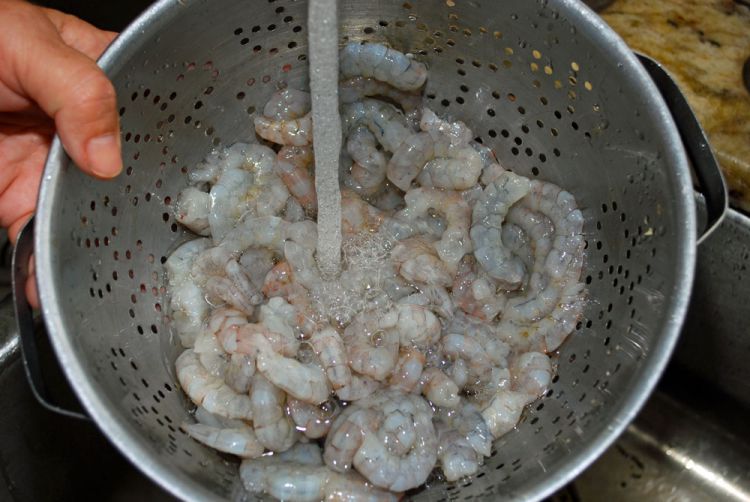
After peeling, shrimp should always be thoroughly washed for best taste.
PREPARATION: Serves 4-6.
Peel shrimp and set aside. Add enough salt to a medium-sized sauce pan to make the water as salty as seawater. Bring the water to a boil and add the pasta. Cook the pasta until it is al dente, drain, cover and set aside. While the pasta water is heating, drain the olives and slice them into rings. Cut garlic cloves into thin slices. Add olive oil and garlic into a second pot and cook over medium-high heat, constantly stirring, until the garlic begins to slightly brown. Do not overcook. Add the olives and cook, stirring often, until the olives soften, 5 to 7 minutes. Add the shrimp and cook until the shrimp are firm and pink. Do not overcook. Add the drained pasta and stir in enough olive oil to keep the pasta from sticking. Salt and pepper to taste.
Brown Shrimp Creole
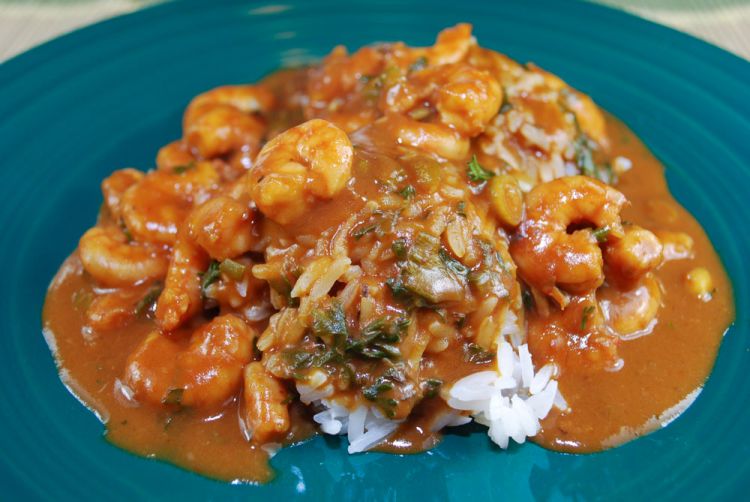
We have paired Randy’s dish with one of our own. This recipe is unusual for a Shrimp Creole because we used roux to tone down the bite of the usual acidy red gravy, and also included less bell pepper than in most recipes.
Other than the presumption that Shrimp Creole originated in New Orleans, it is difficult to untangle the origins and history of this dish. Shrimp Creole is typically red, or as they say in New Orleans, “it has a red gravy.” All manner of processed tomato products can be used: paste, sauce, canned, stewed and so forth, depending upon the preference of the cook.
INGREDIENTS:
- 1 lb. peeled shrimp
- 1/4 cup flour
- 1/3 cup cooking oil
- 1 cup hot water
- 1 8-oz. can tomato sauce
- 1/2 cup chopped green onion
- 1/2 cup chopped parsley
- 1/4 cup chopped bell pepper
- 3 small cloves garlic, chopped
- 1 1/4 tsp. salt
- 1/2 tsp. thyme
- 1/8 tsp. cayenne pepper
- 1 bay leaf
- 1 lemon slice
- 2 cups cooked rice
PREPARATION: Serves 4.
Wash the shrimp, and if they’re large, cut them in half. Make a roux by cooking flour and oil in a heavy pot. Stir constantly to keep from burning. When the roux turns dark brown, gradually add water and cook until thick and smooth, stirring constantly. Add remaining ingredients except rice. Cover and simmer 20 minutes, then serve over rice.


